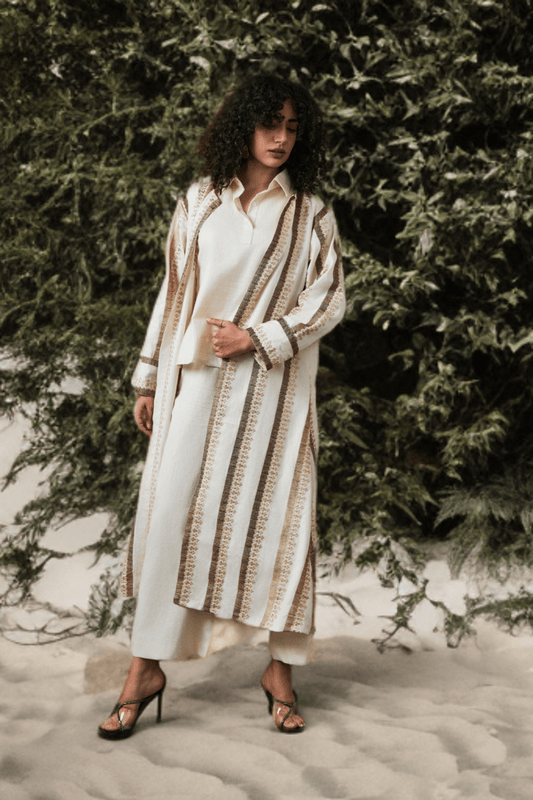Fashion has always been a powerful form of expression, blending culture, identity, and innovation. In recent years, the growing awareness of environmental and social responsibility has brought a fresh perspective to this art form, especially in Dubai’s fashion scene. The rise of Luxury Ethnic Wear infused with sustainable principles is transforming how traditional garments are perceived and created. This article delves into the significance of merging opulence with responsibility and explores how this combination is shaping the future of fashion in Dubai.
The allure of Luxury Ethnic Wear lies not only in its exquisite craftsmanship but also in its deep cultural roots. These garments often tell stories of heritage, celebrating traditions through intricate designs and rich fabrics. In Dubai, a city that thrives on diversity and luxury, ethnic wear has evolved to meet modern tastes while preserving its authentic charm. The importance of luxury ethnic attire extends beyond aesthetics, offering a connection to history and identity that resonates with many. This blend of tradition and luxury creates garments that are timeless and meaningful.
Sustainable Fashion Dubai: Redefining Style with Responsibility
Dubai is rapidly establishing itself as a hub for sustainable fashion Dubai, where designers and brands are pioneering eco-conscious initiatives. The city’s vibrant fashion industry is embracing practices that reduce waste, minimize carbon footprints, and support ethical labor. This commitment is visible in the rise of collections that prioritize natural fabrics, non-toxic dyes, and innovative recycling methods. The integration of sustainability into Dubai’s fashion scene reflects a broader global movement, showing that luxury and environmental stewardship can coexist harmoniously.
The principles of sustainable fashion Dubai extend beyond materials to encompass the entire lifecycle of a garment. Designers in Dubai are adopting circular fashion models, encouraging reuse, repair, and recycling to reduce environmental impact. This approach challenges traditional fast fashion by promoting longevity and mindful consumption. For a city known for its luxury and innovation, the embrace of sustainability signals a mature and responsible fashion industry. It creates opportunities for meaningful collaborations between designers, consumers, and communities focused on preserving resources.
The Synergy Between Luxury Ethnic Wear and Sustainable Fashion
Combining Luxury Ethnic Wear with sustainable practices creates a unique niche that respects both cultural heritage and environmental needs. This synergy offers consumers the chance to wear garments that are not only visually stunning but also ethically made. Traditional techniques such as hand embroidery, natural dyeing, and artisan craftsmanship align well with sustainability goals. These methods often have lower environmental footprints and support local economies, making the fashion industry more inclusive and responsible.
Sustainable practices also enhance the value and exclusivity of luxury ethnic garments. When consumers understand the care, skill, and ethical considerations behind each piece, the appeal increases. This conscious approach encourages slower fashion consumption, where quality and meaning take precedence over quantity. In Dubai, where cultural diversity and luxury converge, this trend is gaining traction. The market for sustainable luxury ethnic wear is expanding as consumers become more aware of the positive impact their choices can have on the world.
Challenges and Future Directions for Sustainable Fashion Dubai
While the momentum behind sustainable fashion Dubai is promising, there are challenges to widespread adoption. The higher costs of eco-friendly materials and ethical production can limit accessibility and market reach. Additionally, blending traditional craftsmanship with modern sustainability standards requires ongoing innovation and education. Despite these hurdles, the fashion industry in Dubai is showing resilience and creativity, finding ways to balance luxury, culture, and responsibility.
Looking ahead, the future of sustainable fashion in Dubai depends on continued collaboration among designers, manufacturers, and consumers. Education and awareness will play a vital role in encouraging more sustainable choices. Technological advancements and innovative materials are likely to drive further progress, enabling brands to produce luxury ethnic wear that is both beautiful and eco-conscious. Dubai’s evolving fashion landscape has the potential to become a global leader in sustainable luxury, inspiring others to follow its example.
Conclusion
The intersection of Luxury Ethnic Wear and sustainable fashion Dubai marks a transformative chapter in the fashion industry, especially within a city known for its grandeur and cultural richness. This blend of tradition, luxury, and environmental awareness is redefining what it means to be fashionable today. For those interested in exploring this elegant yet responsible style, rubeenaameen.com offers a remarkable collection that embodies these values, showcasing how fashion can honor heritage while protecting the


